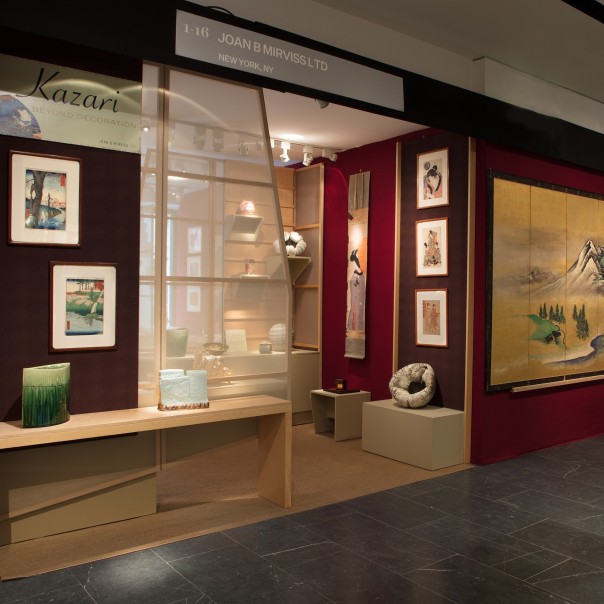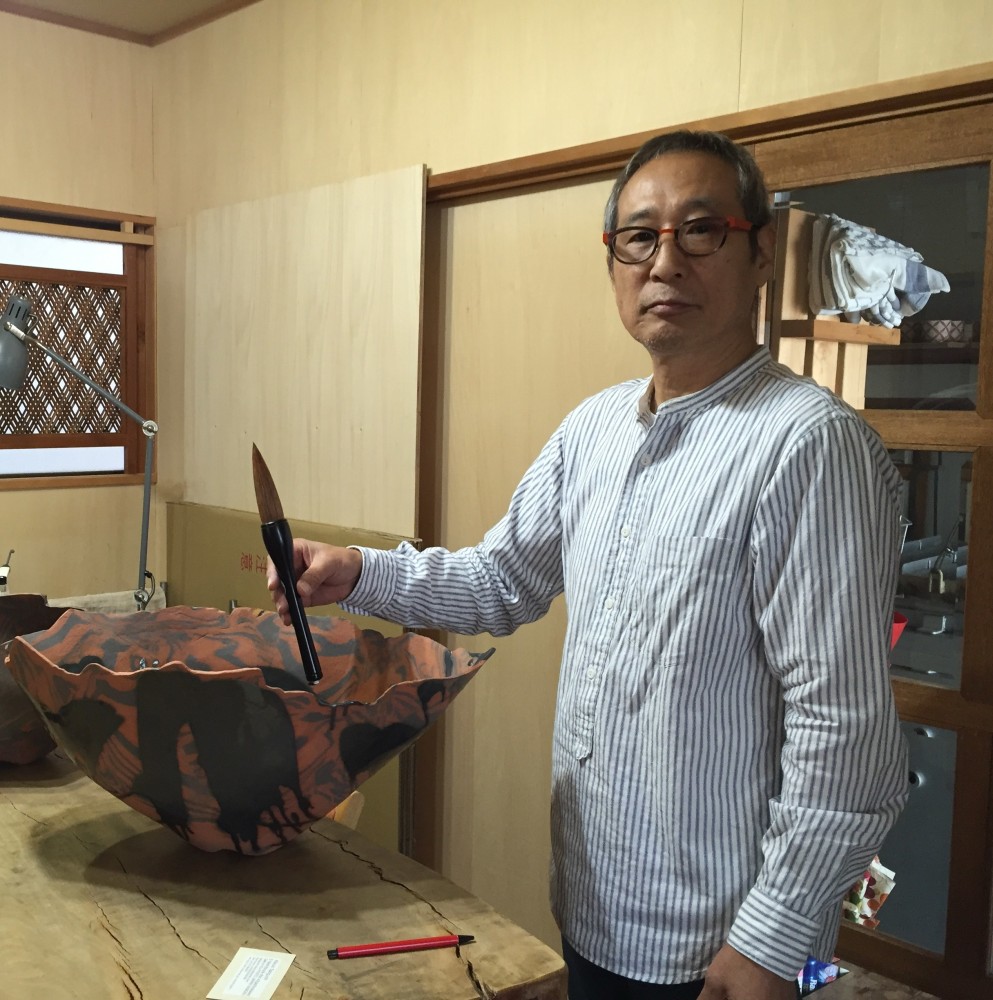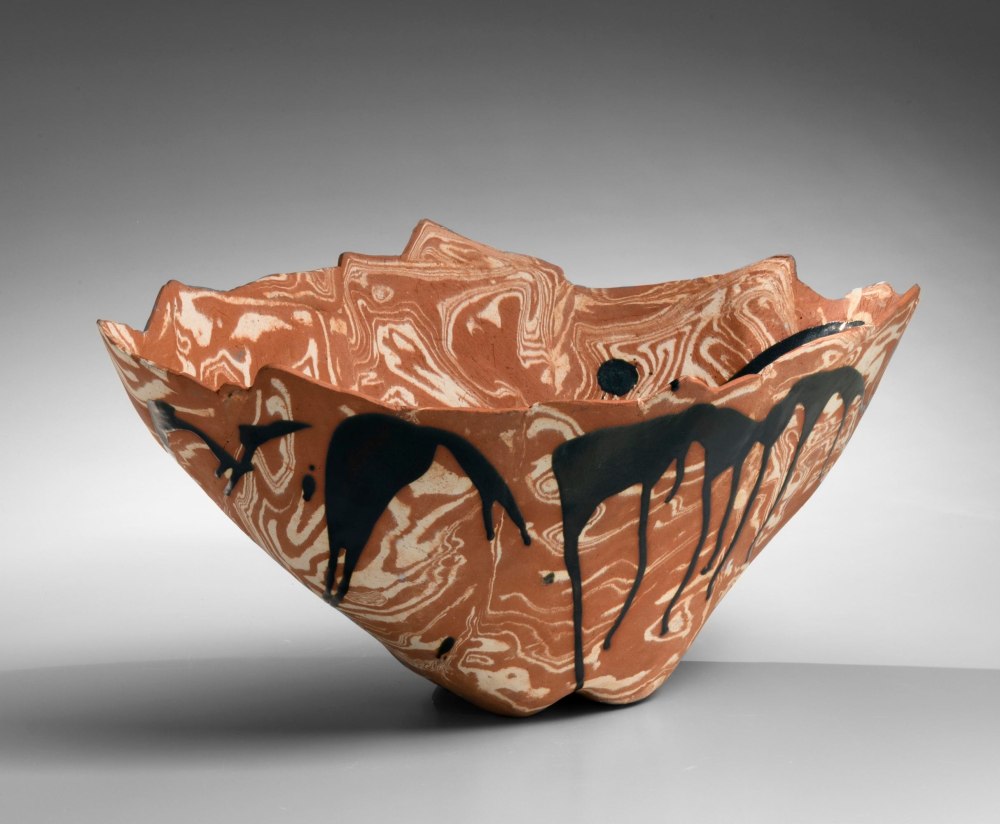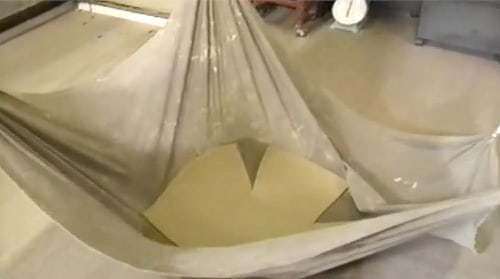


Born 1953, Gojō-zaka Kyoto Japan
TAKIGUCHI KAZUO was the son of a tableware wholesaler in Gojōzaka, Kyoto, at the center of production of traditional Kyoto ceramics. After twice dropping out of university, he studied briefly under Kiyomizu Rokubei VI (1901-1980) followed by a brief time with Yagi Kazuo (1918-1979). He also frequented Kondō Yutaka (1932-1983) and Fujihira Shin (1922-2012). It was Yagi’s aesthetic and focus on non-traditional, sculptural forms that made a lasting impact on Takiguchi. Years later he also studied at the Royal College of Arts, London, graduating in 1992. Living overseas made him realize the important role the Japanese language played in his life and how it impacted his artwork. Since then, he has focused on words as a source of inspiration. The artist emphasizes that just as he is free to use language according to his own desires and needs, he endeavors to give each work a presence unique unto itself. It is important to him that his works touch the viewers’ hearts outside of the context of functionality.

His sculptural process is both complicated and highly creative. Using pulleys, he first flattens a slab of thinly pounded clay between 1/8-1/4 inches thick and lays it in a canvas sheet. With the use of pulleys, he then hoists it and suspends in the air, molding it into the amoebic form he wishes. After the clay body is dry enough to maintain its shape, he then tears open a hole at the top. His ambitiously abstract forms have made him one of the standard-bearers of contemporary Japanese ceramics.